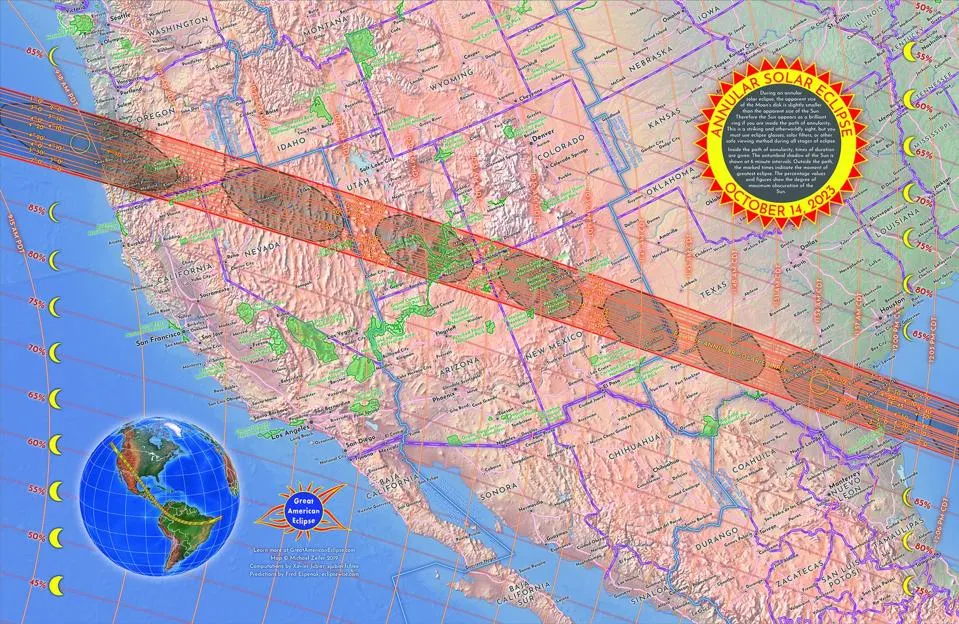
Last weekend, lucky people in parts of North and Central America were treated to an unexpected sight: the bright sun, normally a blazing ball of fire, was transformed into a reddish, delicate ring.
This spectacle stems from a unique celestial alignment between Earth, the moon, and the sun. It’s the so-called annular solar eclipse, often fondly dubbed the “ring of fire” due to the sun’s radiant outline around the moon.
Those fortunate enough to stand in the right spots on Earth captured this ethereal sight, a juxtaposition of light and dark, with their cameras. Yet, as breathtaking as this event was from our terrestrial vantage point, the view from space was no less breathtaking.
Earth, a shadow
Peering down from its orbit, NASA’s DSCOVR EPIC (Earth Polychromatic Imaging Camera), nestled aboard the NOAA’s Deep Space Climate Observatory satellite, revealed an unexpected perspective. Instead of a luminous ring, a somber shadow blanketed parts of the United States along a wide path from Southern Oregon to Texas.
Perched at the Lagrange Point 1, a unique spot approximately 1.5 million kilometers from Earth where the gravitational forces between our planet and the Sun balance out, the EPIC camera has an unparalleled view. On Saturday, Oct. 14, at precisely 16:58 Universal Time, the camera captured the Moon’s shadow, the umbra, as it gracefully drifted across the coast of Texas near Corpus Christi.
As you trace the event’s trajectory, you’ll find that while the annular eclipse painted its magic across vast swaths of the United States, Mexico, and regions of Central and South America, there was a special zone. This “path of annularity”, where the Sun was most obscured by the Moon, offered the most enchanting views.

What is an annular eclipse?
An annular eclipse arises from a particular alignment of the Sun, Earth, and Moon. To begin with, just like in a total solar eclipse, the Moon needs to align perfectly with the Sun. In a total solar eclipse, the Moon appears to cover the Sun entirely, thanks to its optimal distance from Earth. When this happens, observers on Earth can only see the Sun’s corona, which is its outer atmosphere, and any solar prominences that might be active.
However, the annular eclipse stands out due to one key difference. During this type of eclipse, the Moon is at its farthest point from Earth. This point is scientifically referred to as “apogee.” Because the Moon is farther away during an annular eclipse, it appears smaller in the sky and doesn’t cover the Sun completely. As a result, the Sun’s outer edge remains visible, creating a mesmerizing effect that looks like a bright, reddish-orange circle or “ring of fire.”
If you missed this celestial dance, don’t be disheartened. Mark your calendars for April 8, 2024, when the skies from Texas to Maine will once again darken, this time for a total solar eclipse. Until then, we can only wonder and wait, ever in awe of the universe.









